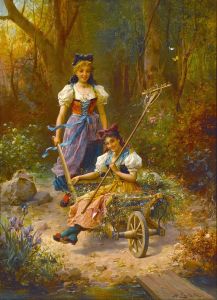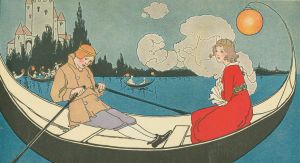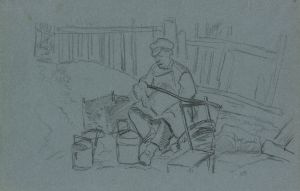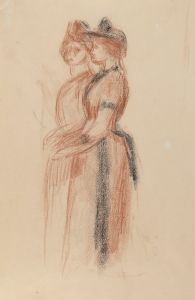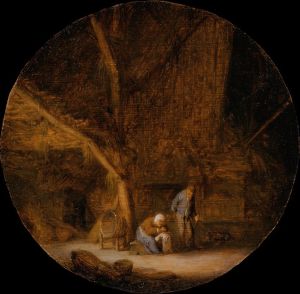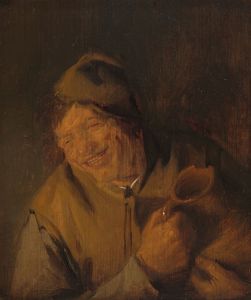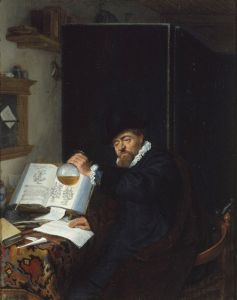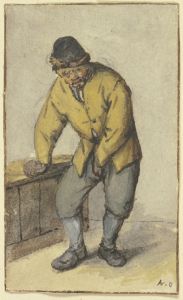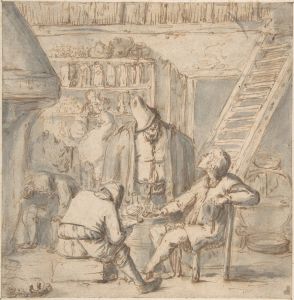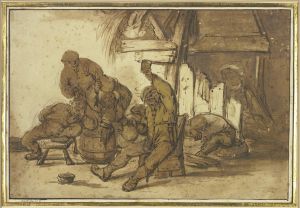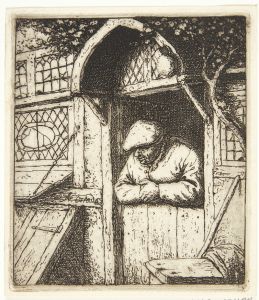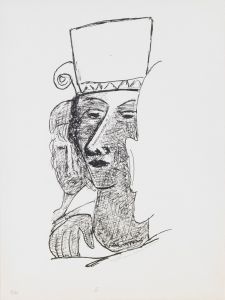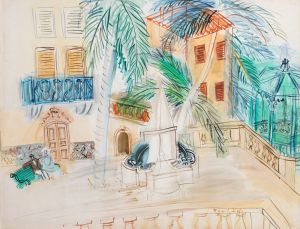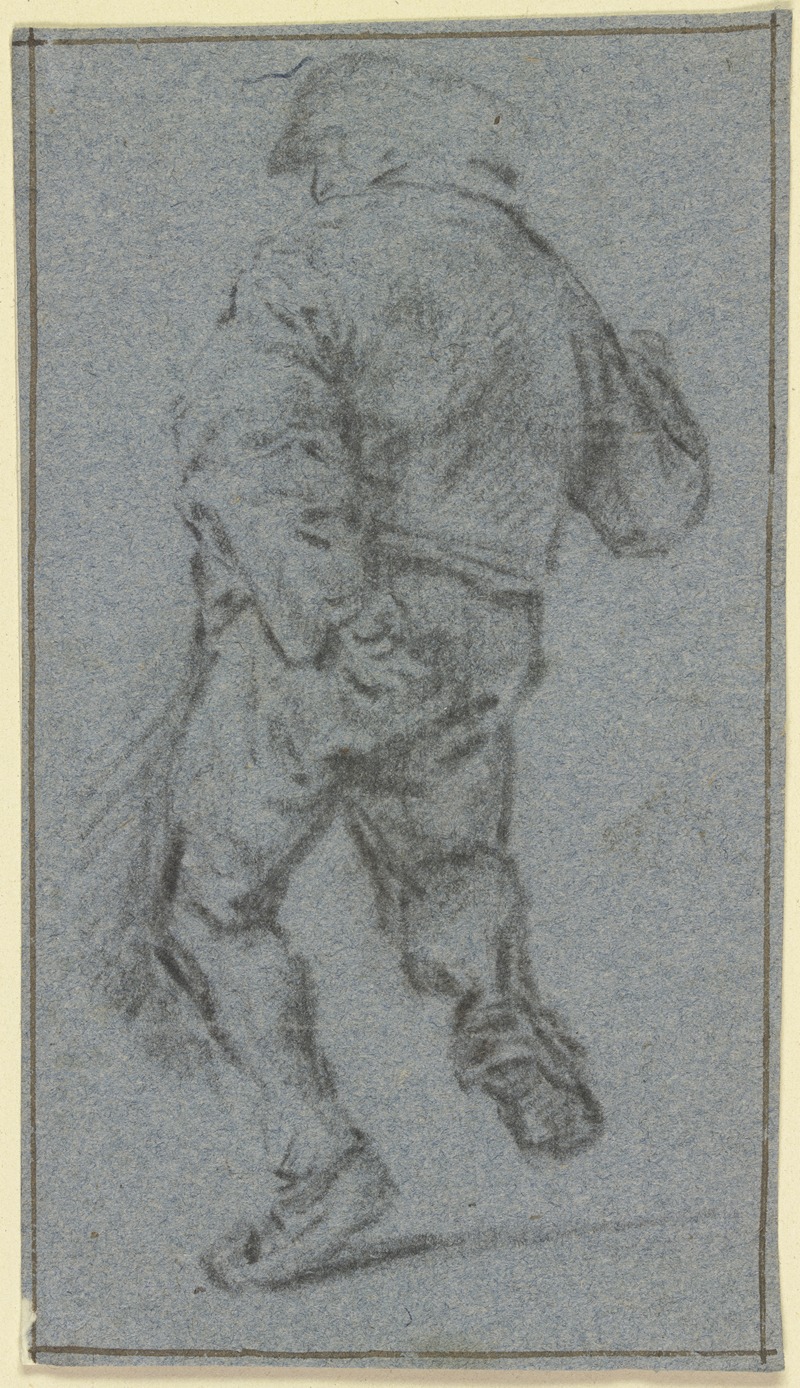
Dancing farmer from behind
A hand-painted replica of Adriaen van Ostade’s masterpiece Dancing farmer from behind, meticulously crafted by professional artists to capture the true essence of the original. Each piece is created with museum-quality canvas and rare mineral pigments, carefully painted by experienced artists with delicate brushstrokes and rich, layered colors to perfectly recreate the texture of the original artwork. Unlike machine-printed reproductions, this hand-painted version brings the painting to life, infused with the artist’s emotions and skill in every stroke. Whether for personal collection or home decoration, it instantly elevates the artistic atmosphere of any space.
Adriaen van Ostade was a notable Dutch Golden Age painter, known for his genre scenes depicting peasant life. His works often capture the everyday activities and social interactions of the lower classes in 17th-century Holland. One of his lesser-known works is "Dancing Farmer from Behind," which, like many of his paintings, offers a glimpse into the rural life of his time.
Adriaen van Ostade was born in 1610 in Haarlem, where he spent most of his life and career. He was a student of Frans Hals, a prominent portrait painter, which influenced his early style. However, van Ostade soon developed his own distinct approach, focusing on the rustic and lively scenes of peasant life. His works are characterized by their detailed depiction of figures, expressive faces, and the use of light and shadow to create depth and atmosphere.
"Dancing Farmer from Behind" is an example of van Ostade's interest in capturing the vibrancy and dynamism of peasant festivities. Although specific details about this painting are scarce, it likely features a farmer engaged in a dance, viewed from behind, which is a common motif in van Ostade's work. This perspective allows the viewer to focus on the movement and posture of the figure, emphasizing the physicality and joy of the dance.
Van Ostade's paintings often include a sense of humor and a keen observation of human nature. His works are not merely realistic depictions but also convey the warmth and vitality of rural life. The settings in his paintings are typically rustic interiors or outdoor scenes, filled with various characters engaged in activities such as drinking, playing music, or dancing. These scenes are rich in detail, providing insight into the clothing, tools, and environments of the time.
The artist's use of color and composition adds to the liveliness of his scenes. He often employed a warm palette, with earthy tones that reflect the natural surroundings of his subjects. The composition of his paintings is carefully arranged to guide the viewer's eye through the scene, highlighting the interactions between figures and their environment.
Adriaen van Ostade's work was highly regarded during his lifetime, and he enjoyed considerable success. His paintings were sought after by collectors, and he produced a significant number of works throughout his career. In addition to paintings, van Ostade also created etchings, which further contributed to his reputation as a skilled artist.
Today, van Ostade's works are appreciated for their historical and artistic value, providing a window into the everyday life of 17th-century Dutch peasants. His ability to capture the essence of his subjects with humor and empathy continues to resonate with audiences. While "Dancing Farmer from Behind" may not be as widely recognized as some of his other works, it remains a testament to van Ostade's talent for portraying the simple joys and complexities of rural life.





